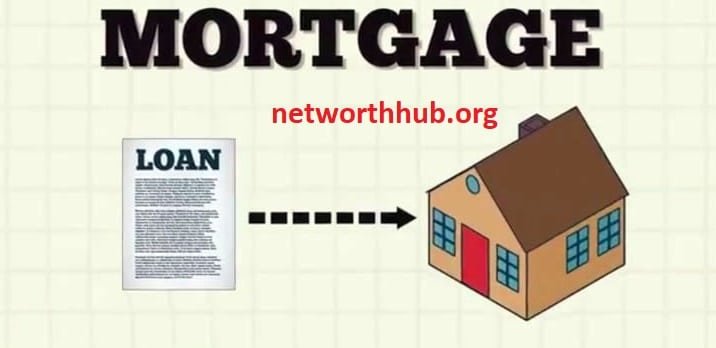1. Fixed-Rate Mortgages
Key Features:
Who Should Consider It?
2. Adjustable-Rate Mortgages (ARMs)
Key Features:
Who Should Consider It?
3. FHA Loans
Key Features:
Who Should Consider It?
4. VA Loans
Key Features:
Who Should Consider It?
5. USDA Loans
Key Features:
Who Should Consider It?
6. Conventional Loans
Key Features:
Who Should Consider It?
7. Jumbo Loans
Key Features:
Who Should Consider It?
8. Interest-Only Mortgages
Key Features:
Who Should Consider It?
Table of Contents
ToggleConclusion
Purchasing a home is one of the most significant financial decisions most people will make. To facilitate this process, many turn to mortgage loans. Understanding the various types of mortgage loans available can help prospective homeowners choose the right fit for their financial situation and long-term goals. In this guide, we will explore the different types of mortgage loans, their features, benefits, and potential drawbacks.

1. Fixed-Rate Mortgages
A fixed-rate mortgage is one of the most popular and straightforward types of home loans. With this type, the interest rate remains constant throughout the life of the loan, ensuring predictable monthly payments.
Key Features:
Stable Payments: Monthly payments for principal and interest remain the same, making budgeting easier.
Long-Term Options: Typically available in 15, 20, or 30-year terms, with 30 years being the most common.
Higher Initial Interest Rates: Compared to adjustable-rate mortgages (ARMs), fixed-rate loans may have higher starting rates.
Who Should Consider It?
This loan type is ideal for individuals looking for stability and predictability in their financial planning. For example, families planning to settle in a neighborhood for many years, retirees who prioritize consistent expenses during retirement, or professionals with stable long-term employment may find fixed-rate mortgages advantageous. This option is also highly recommended for those who are risk-averse and prefer to avoid the uncertainty of fluctuating interest rates. Additionally, individuals seeking a straightforward budgeting process with no surprises in their monthly payments will appreciate the consistency offered by this loan type. loan type is ideal for individuals looking for stability in their monthly payments over the long term.
2. Adjustable-Rate Mortgages (ARMs)
Adjustable-rate mortgages offer an interest rate that can change periodically based on market conditions. Typically, ARMs start with a fixed rate for an initial period, followed by adjustments.
Key Features:
Lower Initial Rates: Often lower than fixed-rate mortgages during the initial fixed period.
Adjustment Periods: Common structures include 5/1, 7/1, or 10/1 ARMs, where the first number represents the fixed-rate years, and the second indicates annual adjustments thereafter.
Rate Caps: ARMs often include caps on how much the interest rate can change per adjustment and over the life of the loan.
Who Should Consider It?
ARMs are suited for borrowers who anticipate a significant life change, such as relocating for work or upgrading to a larger home, before the fixed-rate period ends. They also work well for individuals who expect their income to increase over time, allowing them to manage potential rate adjustments more comfortably. Furthermore, ARMs can benefit financially savvy borrowers who monitor interest rates closely and are willing to refinance if market conditions become less favorable. are suited for borrowers who anticipate moving or refinancing before the adjustment period begins or who are comfortable with potential rate changes.
3. FHA Loans
Backed by the Federal Housing Administration (FHA), these loans are designed to make homeownership accessible to first-time buyers and those with less-than-perfect credit.
Key Features:
Low Down Payment: Typically as low as 3.5% of the purchase price.
Flexible Credit Requirements: Lower credit score requirements compared to conventional loans.
Mortgage Insurance Premium (MIP): Borrowers must pay upfront and annual MIP.
Who Should Consider It?
FHA loans are ideal for first-time homebuyers or individuals with limited savings for a down payment. For example, a young professional couple with moderate income and a limited credit history might find FHA loans attractive due to their flexible credit requirements. Additionally, borrowers who have faced financial challenges, such as bankruptcy or foreclosure, may qualify for FHA loans sooner than they would with conventional loans, making this a practical option for rebuilding homeownership dreams.
4. VA Loans
VA loans are exclusive to eligible veterans, active-duty military members, and certain members of the National Guard and Reserves. They are backed by the U.S. Department of Veterans Affairs.
Key Features:
No Down Payment: 100% financing is available in most cases.
No Private Mortgage Insurance (PMI): Unlike conventional loans, VA loans do not require PMI.
Competitive Interest Rates: Often lower than other loan types.
Who Should Consider It?
Veterans, active-duty military members, and their eligible family members should consider VA loans. For instance, a recently discharged veteran looking to establish a permanent residence may benefit from the zero down payment feature. Additionally, active-duty service members who relocate frequently can leverage the competitive interest rates and reduced upfront costs to secure affordable housing. VA loans are also an excellent option for those seeking to avoid private mortgage insurance (PMI) while benefiting from favorable loan terms. and service members who meet eligibility requirements and want to minimize upfront costs should consider a VA loan.
Conventional loans are a good option for borrowers with strong credit, stable income, and sufficient savings for a down payment. For example, individuals with a steady job history and a credit score above 620 are likely to qualify for competitive rates. These loans are also suitable for homebuyers who can afford at least 5% down


